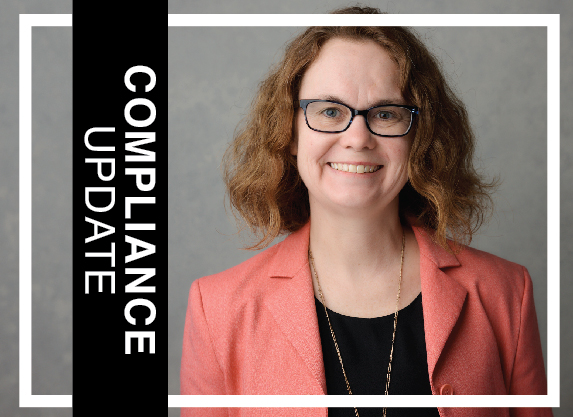|
by Amy Kleinschmit, Chief Compliance Officer
DakCU CECL Webinar DakCU is hosting a complimentary webinar on NCUA’s Simplified CECL Tool on Tuesday, April 18 at 10:00 a.m. (CT). The Simplified CECL Tool provides a methodology for credit unions to determine the Allowance for Credit Losses (ACL) on loans and leases for their loan portfolio. This free webinar will include a review of the NCUA’s latest Simplified CECL Tool, as well as a Q&A session. Our guest speaker will be Chris McGrath, Acting Chief Accountant for the National Credit Union Administration, Office of Examination and Insurance. McGrath serves the credit union industry with advice and guidance on the application of generally accepted accounting principles. Prior to joining NCUA in 2004, he practiced in financial auditing and assurance with Deloitte & Touche, including three years working out of Istanbul, Turkey, auditing multinational companies under U.S. GAAP and International Financial Reporting Standards. For NCUA, he has served as Budget Officer as well as leading financial reporting on its Share Insurance Fund. McGrath is a Certified Public Accountant licensed in Maryland and Virginia, and for over 15 years, he has been an adjunct professor at Georgetown University teaching accounting, finance, and economics. CFPB Policy Statement – Abusiveness The Consumer Financial Protection Bureau (CFPB) recently issued this Policy Statement on Abusiveness. The Consumer Financial Protection Act of 2010 (CFPA) added “abusive” conduct to the prior prohibition on unfair, deceptive acts and practices (UDAP). As explained in the statement, “the CFPB is issuing this Policy Statement to summarize enforcement actions that have been taken since the enactment of CFPA and explain how the CFPB analyzes the elements of abusiveness through relevant examples, with the goal of providing an analytical framework to fellow government enforcers and to the market for how to identify violative acts or practices.” Under the CFPA, there are two abusiveness prohibitions. An abusive act or practice: (1) Materially interferes with the ability of a consumer to understand a term or condition of a consumer financial product or service; or (2) Takes unreasonable advantage of: A lack of understanding on the part of the consumer of the material risks, costs, or conditions of the product or service; the inability of the consumer to protect the interests of the consumer in selecting or using a consumer financial product or service; OR the reasonable reliance by the consumer on a covered person to act in the interests of the consumer. With regard to the second prong – the CFPB notes, “under the CFPA, it is illegal for an entity to take unreasonable advantage of one of these three circumstances, even if the condition was not created by the entity.” The Policy Statement explains, abusiveness requires no showing of substantial injury to establish liability, but is rather focused on conduct. The statement goes on to further analyze each part of the “abusiveness” standard. To expand on a few areas of the discussion, with regard to “lack of understanding” the policy statement provides that “While acts or omissions by an entity can be relevant in determining whether people lack understanding, the prohibition in section 1031(d)(2)(A) does not require that the entity caused the person’s lack of understanding through untruthful statements or other actions or omissions. Under the text of section 1031(d)(2)(A), the consumer’s lack of understanding, regardless of how it arose, is sufficient. If people lack understanding, entities may not take unreasonable advantage of that lack of understanding. The lack of understanding can be caused by third parties and can exist even when there is no contractual relationship between the person and the entity that takes unreasonable advantage of the person’s lack of understanding.” The policy statement will be published in the Federal Register, and comments can be submitted until July 3, 2023. CFPB – Small Business Lending Final Rule The CFPB has issued their final rule concerning small business lending reporting requirements under section 1071 of the Dodd-Frank Act. The rule amends Regulation B to implement Section 1071 mandates. The final rule and other implementation resources from the CFPB can be found here. The rule is effective 90 days after it is published in the Federal Register, however, the mandatory compliance dates are staggered depending on loan volume, with the largest lenders being required to implement first.
As noted above, a “Covered financial institution” means a financial institution that originated at least 100 covered credit transactions for small businesses in each of the two preceding calendar years. To expand who is subject to this rule it is important to drill down to each of the definitions of terms referenced. A business is a “small business” if its gross annual revenue for its preceding fiscal year is $5 million or less. Every 5 years after January 1, 2025, the gross annual revenue threshold will be adjusted based on changes to the Consumer Price Index for All Urban Consumers. “Covered credit transaction” means an extension of “business credit,” however, there are a number of exclusions, which are discussed in a moment, but first “business credit” has the same meaning as under current Regulation B definitions. Generally, “business credit” refers to extensions of credit primarily for business or commercial (including agricultural) purposes, but excluding certain types of extensions of credit. Thus, covered credit transactions can include loans, lines of credit, credit cards, merchant cash advances, and credit products used for agricultural purposes. The exclusions for “covered credit transaction” for purposes of this final rule include – trade credit, HDMA reportable transactions, insurance premium financing, public utilities credit, securities credit and incidental credit. Credit unions that are “covered financial institutions” must compile and maintain data regarding covered applications from small businesses. The final rule directs how the data is required to be compiled and what data points are required. But first, another vocab term “Covered application” means an oral or written request for a covered credit transaction that is made in accordance with procedures used by a financial institution for the type of credit requested. Exceptions - a covered application does not include: (1) Reevaluation, extension, or renewal requests on an existing business credit account, unless the request seeks additional credit amounts; or (2) Inquiries and prequalification requests. The CFPB’s final rule also implements a requirement in section 1071 that certain data collected from applicants be shielded from underwriters and certain other persons (or, if a firewall is not feasible, a notice is given instead); the CFPB refers to this as the “firewall.” As noted above, the CFPB has issued a number of implementation resources includes a compliance dates info sheet and data points chart, which can be found here. As always, DakCU members may contact Amy Kleinschmit with any compliance related questions. Comments are closed.
|
The MemoThe Memo is DakCU's newsletter that keeps Want the Memo delivered straight to your inbox?
Archives
July 2024
Categories
All
|
|
Copyright Dakota Credit Union Association. All Rights Reserved.
2005 N Kavaney Dr - Suite 201 | Bismarck, North Dakota 58501 Phone: 800-279-6328 | [email protected] | sitemap | privacy policy |






